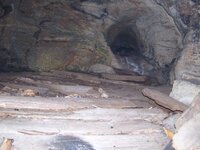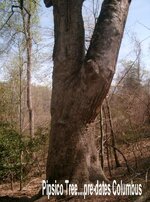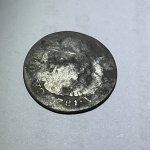swiftsearcher
Sr. Member
A picture of the inside of the cave with the mine entrance. This is the rich mine Swift spoke of in his journals. I found it April 25th of this year (the last mine I had to find). I also have pics of the cave entrance and all the surrounding landmarks Swift mentioned (they will be pictured in my book). The main entrance was on the second ledge, in red sandstone and had a chestnut burr rock above the entrance, just as Swift stated. Also, I have pics of all the surrounding landmarks, as well as the other mines, landmarks, etc. Swift mentioned.
The wooden planks inside the mine have been found to be locust. A sample is currently being carbon dated and I will include a result of the dating in my book as well.
The wooden planks inside the mine have been found to be locust. A sample is currently being carbon dated and I will include a result of the dating in my book as well.



 THAT... is a WOWSTER!
THAT... is a WOWSTER! 
 Plus, this would put the skeptics to bed!
Plus, this would put the skeptics to bed!  ?
?
 It is a known fact that the falls was "salted" to milk investors!
It is a known fact that the falls was "salted" to milk investors! 

